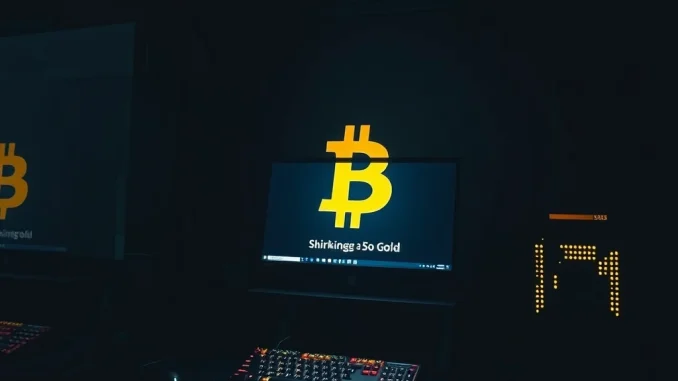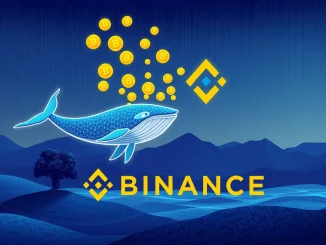
Imagine the thrill: a single individual, running their own equipment, successfully mining a Bitcoin block and instantly becoming significantly richer. This isn’t just a hypothetical scenario; it recently happened, proving that while difficult, solo mining Bitcoin is still possible and potentially very rewarding. Let’s dive into the details of this incredible feat.
How Did This Solo Bitcoin Miner Strike Gold?
According to data verified on the Bitcoin blockchain explorer mempool, a lone wolf in the vast world of Bitcoin mining managed to successfully mine block 899,826. This wasn’t just any block; finding it yielded a substantial reward of 3.15 BTC. At the time of the discovery, this Bitcoin haul was valued at approximately $330,000. This kind of payout is typically reserved for large mining pools, making a solo miner’s success story particularly noteworthy in the crypto news cycle.
Successfully finding a block as a solo miner requires immense luck, given the sheer amount of computing power (hash rate) dedicated globally to bitcoin mining. The network difficulty is astronomically high. So, how did this individual manage it?
- Beating the Odds: The probability of a single miner with modest equipment finding a block is incredibly low, akin to winning a lottery.
- Potential for Rented Power: As suggested by software engineer and administrator at the mining pool ckpool, Con Kolivas, the miner likely boosted their chances significantly by renting additional hash rate. This increases their temporary computing power, giving them a slightly better (though still slim) shot at finding the next bitcoin block before anyone else.
Solo Mining vs. Pool Mining: Understanding the Difference
To truly appreciate the solo miner’s achievement, it helps to understand the two main approaches to mine Bitcoin:
Solo Mining:
- An individual miner uses their own equipment (ASICs) independently.
- If they find a block, they keep the *entire* block reward (currently 3.125 BTC plus transaction fees, though this block was found just before the halving when the reward was 6.25 BTC + fees).
- The chances of finding a block are extremely low unless you have a massive amount of hash rate.
- High risk, potentially very high reward.
Pool Mining:
- Miners combine their computing power into a ‘pool’.
- When the pool finds a block, the reward is split among all participants based on how much hash rate they contributed.
- Finding blocks is much more frequent and predictable for the pool as a whole.
- Lower risk, smaller but more consistent payouts.
This particular solo bitcoin miner opted for the high-stakes solo route and it paid off spectacularly this time.
The Mechanics Behind Earning a Bitcoin Block Reward
When a miner (or a mining pool) successfully finds a Bitcoin block, they are the first to solve a complex computational puzzle. Solving this puzzle allows them to add the next block of verified transactions to the blockchain. As a reward for this computational work and securing the network, the Bitcoin protocol grants them newly minted BTC (the block subsidy) plus any transaction fees included in that block.
For block 899,826, the reward structure was:
- Block Subsidy: 3.125 BTC (This block was found *after* the April 2024 halving, reducing the subsidy from 6.25 BTC). The original article’s figure of 3.15 BTC likely includes a small amount of transaction fees on top of the subsidy.
- Transaction Fees: The sum of fees from all transactions included in the block.
- Total: 3.15 BTC (as reported).
This payout serves as the incentive for miners to dedicate resources to maintaining the Bitcoin network’s security and integrity.
What Does This Mean for Aspiring Miners?
While this story is inspiring, it’s crucial to understand that it’s an exception, not the norm. For most individuals, trying to mine Bitcoin solo with standard consumer hardware is futile due to the competitive landscape dominated by industrial-scale operations and mining pools.
However, the fact that it *can* happen keeps the dream alive for some. Renting hash rate, as this miner potentially did, is one way to marginally increase your odds for a short period, but it comes with costs and no guarantee of success.
Conclusion: A Testament to Bitcoin’s Design
The tale of the solo bitcoin miner earning a massive $330K by finding a bitcoin block is a compelling reminder of the decentralized nature of Bitcoin and the lottery-like potential for those who participate directly in securing its network. While pool mining offers consistent, smaller rewards, the rare solo success stories like this capture the imagination and highlight the significant incentives baked into the protocol. It’s a fascinating piece of crypto news that underscores the unpredictable and sometimes incredibly rewarding world of cryptocurrency mining.



